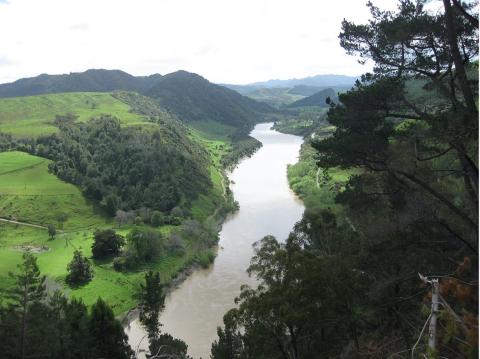Warrior Lawyer Profile: Christopher Stone

Paul Johnson
Allard JD Candidate 2023
Jun 23, 2022
Bringing Standing for Trees Within the Pale
Should nature have its own rights and be able to bring a legal action in court to enforce them? Fifty years ago, American law professor Christopher D. Stone argued just that—and in doing so, influenced the course of both environmental law and reconciliation with Indigenous peoples around the world.
A provocative question that triggered a paradigm shift

Stone completed his undergraduate degree at Harvard University in 1959 and graduated from Yale Law School in 1962. After completing a fellowship in law and economics at the University of Chicago and practising law in New York, Stone joined the University of Southern California (USC) Gould School of Law in 1965. He was a professor at USC for more than 55 years until he passed away in 2021. While Stone’s education and career might seem somewhat conventional on the surface, his thinking was anything but.
In 1972, Stone published a law review article provocatively titled “Should Trees Have Standing?—Toward Legal Rights for Natural Objects”. In the article, he suggested that natural objects should have standing—that is, the capacity to appear in court to defend their interests. This would involve nature having legal personality, allowing entities such as trees and rivers to have rights they could enforce in court, with humans serving as their voice. While the concept seemed novel, Stone reminded readers that legal personality had been extended to other non-human things, such as corporations and nation states. Indeed, the history of humanity reveals a gradual expansion of the types of entities deemed to be “legal persons”.
“Should Trees Have Standing?” struck a chord with many people, and the article—which Stone later expanded into a book with the same title—formed the foundation for the concepts of environmental personhood and the rights of nature. The idea of nature having standing found support in the famous dissent of Justice William O. Douglas of the Supreme Court of the United States in the 1972 decision Sierra Club v Morton. In Morton, Justice Douglas argued for the Mineral King Valley to have standing—which would have allowed the valley to directly represent its interests in court, instead of necessitating the Sierra Club’s attempt to gain standing to protect the valley. The Sierra Club was ultimately denied standing in Morton. Stone’s ideas also faced criticism from lawyers who adopted more traditionalist conceptions of legal personality and who thought his ideas were ludicrous. Yet despite their fair share of critics, Stone’s ideas gained ground.
Bridging the gap

Photo by Felix Engelhardt. Licensed under Creative Commons Attribution 2.0 Generic license.
While Stone’s ideas were novel to the common law, they have resonated with many Indigenous perspectives. In 2010, Māori legal scholars Jacinta Ruru and James Morris argued that Stone’s idea to recognize nature’s legal personality could be applied in Aotearoa New Zealand to help bridge the gap between the common law and Māori legal orders. In 2014, the forest Te Urewera in New Zealand was recognized as having legal personality. The Whanganui River came next in 2017. No longer would the Whanganui River be viewed as a mere object in the eyes of the law. Instead, it has legal personality and guardians tasked with representing its interests. Chris Finlayson, New Zealand’s Attorney General at the time, noted that Stone’s article provided a means for the government of New Zealand to reconcile Māori and Western perspectives. The professor’s innovative ideas thus helped resolve centuries-old tensions between colonial common law and Māori laws and associated worldviews.
Stone’s influence has also been felt in Canada. On February 16, 2021, Mutehekau Shipu (Magpie River) in Quebec was recognized as having legal personality by the Innu Council of Ekuanitshit and the municipality of Minganie. While the river’s legal personality has not yet been recognized in a federal or provincial statute, its local recognition as a legal person represents an exciting development in Canadian law.

Christopher Stone passed away on May 14, 2021, at the age of 83. He left behind a remarkable legacy of innovative thinking, open-mindedness and resilience in the face of criticism. Stone shows us that “warrior lawyers” are not only litigators who win ground-breaking cases. Warrior lawyers can also be legal academics who challenge assumptions underpinning legal systems. Stone combatted the notion that the natural world is separate from, and subservient to, humans. In suggesting a novel means of providing nature itself a legal voice, through legal personality, he catalyzed a paradigm shift in the law’s conception of the natural world.
- Centre for Law and the Environment


